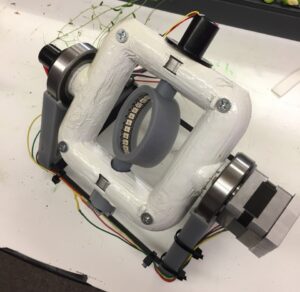It’s natural for people to worry about the future. Our generation worries about things that are especially pressing: climate change, overpopulation, destruction of habitats, etc. These issues are concerning, but I am continually amazed at how fast we respond to these problems. Science moves quickly; so quickly we often take it for granted.
A hundred years ago, someone would receive their thesis for analyzing a simple molecule. In 2017, it’s a 5-minute procedure in a 3-hour introductory organic chemistry lab class.
A decade ago, if we needed a plant imaging device, it may have taken years and real money to develop. In 2017, an engineer can 3-D print every piece needed to order computing power and cameras for under $50 and have a prototype in a month.
Free cloud storage for scientists (Cyverse), Google documents for collaboration, 3-D printing, Arduino, and Raspberry Pi, have accelerated research in our lab.

Young scientists and engineers with ambition have accelerated research in our lab.
I’m raving because Jerry and a team of engineers here at Wisconsin have developed another clinostat prototype for microgravity research. It’s multi-directional and changes lighting. How cool is that?
I’m excited to use this device to stress plants in a way that mimics microgravity. Science is awesome.
Let’s grow plants in space.
